- Free First Class Delivery
- Buyer Protection
- Secure Online Shopping
- Healthcare Professional? Click here
Ergonomic workplace
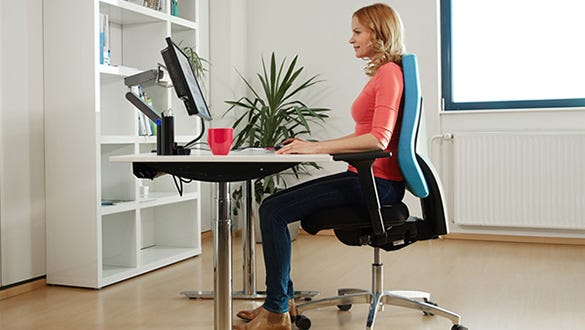

Categories
Sitting for long periods at work is a strain for the back
Many people spend the major part of their working hours at their desks, where they remain motionless in a fixed, tense posture in front of their computers.
However, sitting for long periods is hard labour for our backs. For this reason, it's hardly surprising that many office workers complain about pain in their backs or necks.
Healthy backs – societal developments
Sitting properly and ergonomic office furniture and equipment can help people with bad backs prevent back pain and once again perform their work free of pain.
Ms Susanne Weber, coach/ergonomics advisor and physiotherapist at Dauphin HumanDesign® Group GmbH & Co. KG, talks about sitting habits and lack of exercise in day-to-day office life.
E-book: setting up an ergonomic workplace
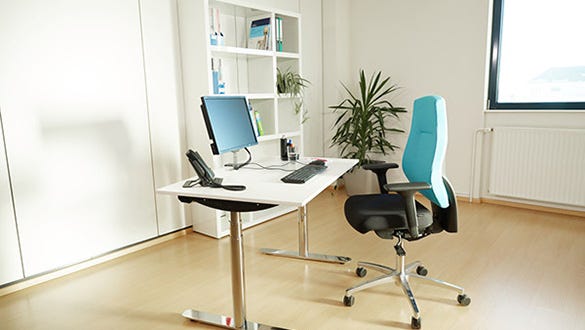

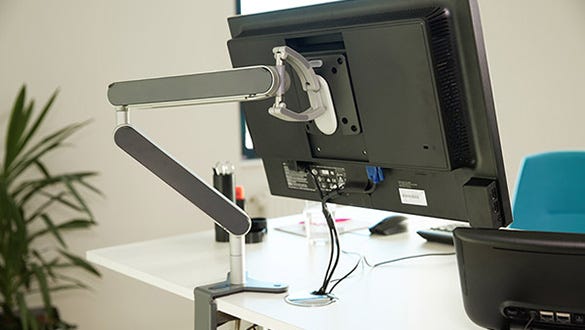

Prolonged sitting in front of the computer can damage the spine. People who work in offices and spend most of their time concentrating on the screen are more likely to suffer back pain.
With a properly set up workplace, which optimally puts into practice all the various aspects of ergonomics, you will work more productively and can keep your back pain permanently under control.
This e-book will tell you,
- what is behind the term ergonomic workplace
- how you can set up your workplace in such a way that you will have less back and neck pain
- what dynamic sitting means
- how you can recognise exceptionally ergonomic office furniture
- how you can take the strain off your back with practical tips and simple exercises to achieve a pain-free everyday working life.
Are you sitting properly? Rules for ergonomic sitting
In order to prevent back pain at work, the workplace must not only be furnished and equipped ergonomically, but a couple of rules for sitting ergonomically should be observed as well.
Our video will show you the ideal set up for your desk and chair.
- Adjust the height of your chair and your desk, so that your arms and legs are at right angles to each other. If the angles are less than 90°, you can develop circulatory disorders.
- Sit actively and dynamically. Avoid a static sitting posture. This will improve the circulation to the musculature and the intervertebral discs. It will also reduce the risk of muscular tension.
- Use all the seat of your chair. At least 60 percent of the area should support your thighs. Use the adjustment options on your chair as well.
- Sit upright and use the backrest. Make sure you don't sit leaning forward. You should also avoid a rounded back.
- Use your chair's armrests. By resting your arms on the armrests, you take the tension off your shoulder region and prevent muscular tension.
Tips from Susanne Weber, coach/ergonomics advisor and physiotherapist
- Observe the 60 – 30 – 10 rule: spend 60% of your time sitting, 30% standing and 10% moving around. I recommend you spend 15 minutes every hour standing at your workplace.
- Stand while you're on the 'phone or take the stairs instead of the lift. A brief stroll during the lunch break not only clears the head, it also relaxes your back.
- Leave the car at home more often and ride your bike to work instead. If you use public transport, get off a stop earlier and walk the rest of the way to work.
- Use a smart wristband, to motivate yourself and better monitor your activity during the day. Check regularly how far you have walked during the day and set the wristband to remind you to move around at regular intervals.
What does dynamic sitting actually mean?
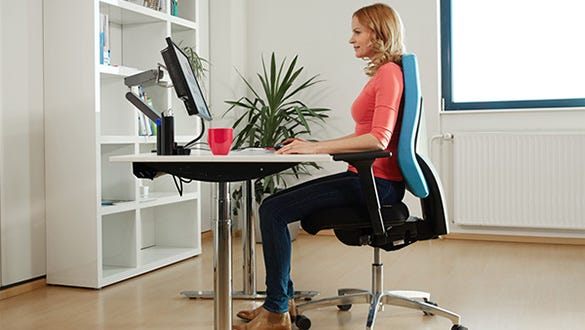

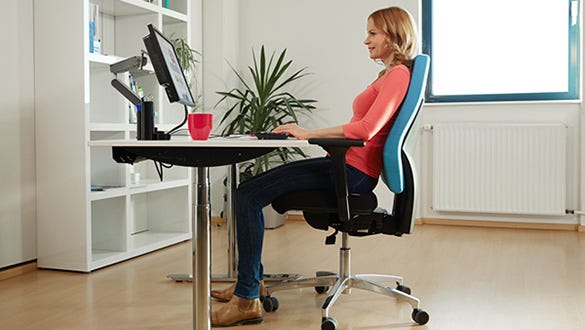

Use the time during the breaks to relax your back.
In the video, we'll show you just how quickly and simply you can do this at your workplace.
Prolonged sitting is very stressful for the back. However, many people have to spend hours and hours sitting in front of the PC or at their desks. So we should sit dynamically to take the strain off our locomotor apparatus and thus prevent back pain.
This means changing the sitting position as often as possible.
Changing position constantly is a form of natural exercise for the back muscles. Regular movement also promotes the circulation to the muscles and increases the supply of nutrients to the intervertebral discs.
For dynamic sitting, we should ideally alternate between three sitting positions: leaning forward, then upright and then finally leaning back again.
Supports and orthoses from medi




Do you want to fight against back pain?
What medical devices are there to strengthen muscles and relieve pain?
Read our white paper for more information on how to actively combat back pain with supports and orthoses.









